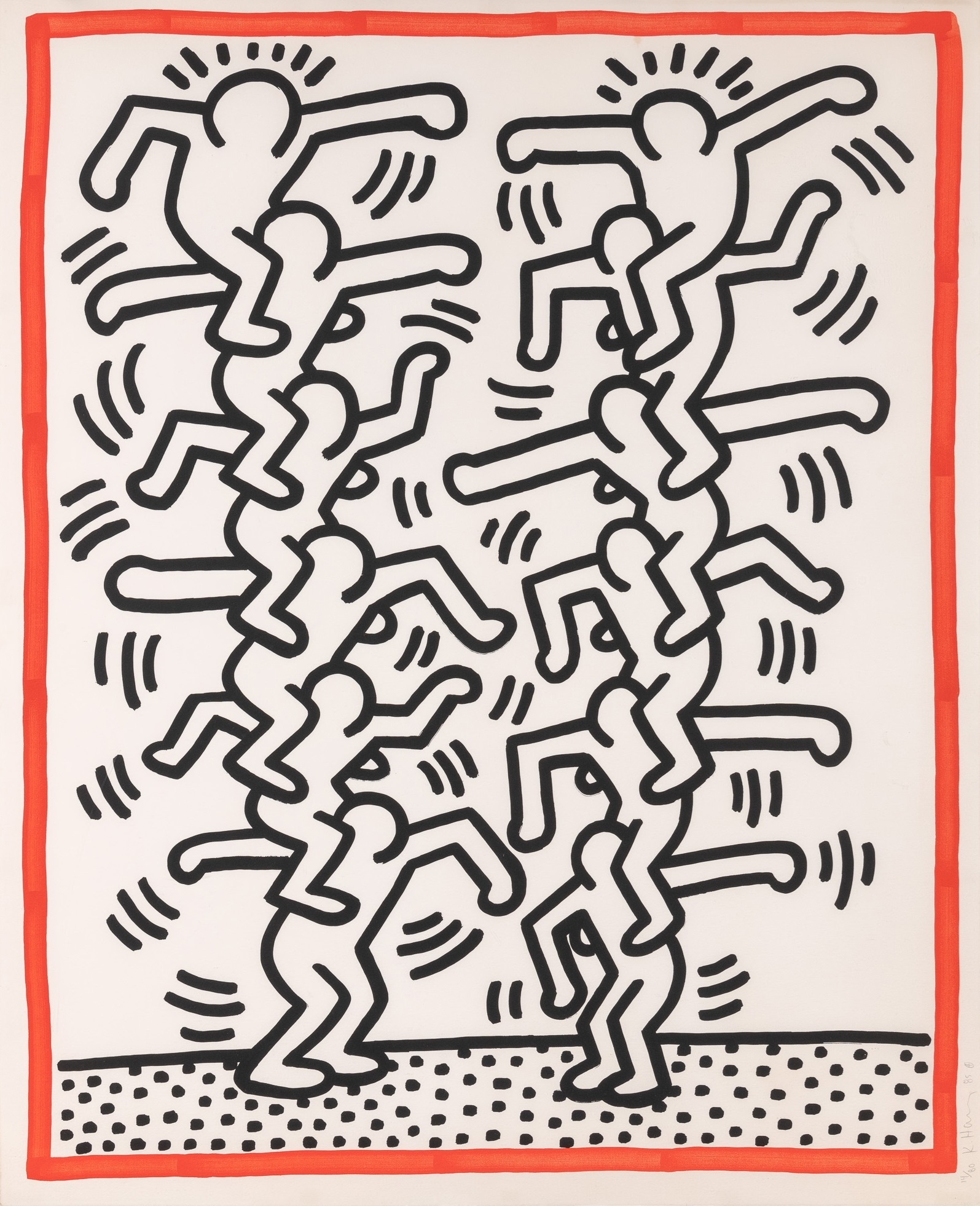
Keith Haring
American, 1958-1990
Keith Haring was a defining force in 1980s American art, known for his bold graphic style and belief that art should be accessible to all. Born in Kutztown, Pennsylvania, he moved to New York in 1978 to study at the School of Visual Arts. There, he found inspiration in the city’s streets, clubs, and subways and began creating chalk drawings on empty advertising panels. These spontaneous works became a signature, merging the energy of graffiti with a refined symbolic language.
His recurring icons, radiant babies, barking dogs, dancing figures, formed a visual system that addressed themes of joy, community, inequality, and resistance. Though often associated with street art, Haring stood apart through his clarity of message and ability to move fluidly between public spaces, galleries, and commercial platforms. His collaborations with artists like Jean-Michel Basquiat and Andy Warhol reflected a shared interest in breaking down barriers between art and life.
In 1986, he opened the Pop Shop to make his work available beyond the gallery system, furthering his mission of democratizing art. He also painted murals in hospitals, schools, and public spaces around the world, often involving local communities in the process. After being diagnosed with HIV in 1988, Haring used his art and voice to raise awareness and combat stigma, founding the Keith Haring Foundation to support AIDS-related causes.
Haring died in 1990 at just 31, but his legacy remains vital. His work lives on in major museum collections and public murals, and his message continues to resonate across generations.







